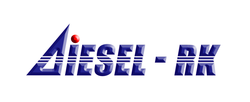History of the project
Development of the DIESEL-RK software core has been
started in 1981-82 in the department of Internal Combustion Engines (Piston Engines),
Bauman Moscow State Technical University. From its very beginning the software was devised as a tool for optimization
research and, therefore, a particular emphasis was made on the adequacy and operating
speed of the mathematical models and algorithms applied, many of those being original
authors’ codes. All these years the work has been constantly carried out in touch with
engineers and computational research performed was to the order of different manufacturers
of Internal Combustion Engines (ICE). In this time the software adequacy has been tested
to fit dozens of engines of various types and purposes. Many computational procedures and
options were introduced into the software to suit the demand of industrial enterprises –
software users including biggest engine manufacturers of Russia.
The software is intended primarily for ICE developers
and researchers; hence much attention is given to provide the product of convenient use
for an engineer. The input and output data therefore are organized in a way to suit the
industrial demand.
The first software version with a convenient interface
and functions of multiparametrical optimization was issued in 1991 owing to financial
support of A.Surin, to whom the project leader is truly grateful. The first DIESEL
software was in use among leading motor manufacturers of Russia because of its convenient
interface and core with the realized and at that time modern combustion model of the
compression ignition engine.
In 1993-1994 based on the novel computational code of
mixture formation and combustion in diesels, developed by professor of the Kharkov
Polytechnical Institute N.Razleytsev, a new software generation was developed and issued:
DIESEL-4t software and its modification DIESEL-2t for two-stroke engines. Being a DOS
application, the programs were equipped with a window interface reminding a Window
application by appearance. For visualization of the mixture formation process and
combustion in a diesel Fuel Jet Visualization code was included as part of DIESEL-4t
software. In late 90s remote access to the software via INTERNET was organized. The
software was intensively used not only within industrial enterprises but in the
educational process at the department of ICE (Piston Engines), Bauman University, as well.
The year 2002 gave start to the development of the new
Window NT-oriented DIESEL-RK software. The software core was considerably improved and
included the up-to-date procedure for calculating toxic emissions with account of the EGR
system, multiphase injection research, what provides and expands the potentialities of the
diesel performances calculation. As a result of hard work of the workers’ team the first
version of DIESEL-RK software has been issued in 2004.
As a professional product, DIESEL-RK software can be
successfully used by the beginners: students and PhD students of higher
schools. To make the process of numerous input data setting (being at times very
time-consuming) easier, and empirical coefficients setting easier, the
software comprises specific tools – settings wizards. The wizards will create data files
automatically on the basis of most general information on the engine to be studied, using
common technical solutions accepted in the motor-building industry. Thus, the
process of input data setting is considerably simplified, and the most elaborate stage of
computational research – calculation model calibration – is simplified as well. The latter fact
is special importance to students having little experience, time and experimental date
for customizing the software with the engine, and also for the needs of researchers
performing quick examination of a particular engine design.
Multiparametrical optimization used in the software
ensures a radically increased efficiency of numerical research aimed at improving the
technical level of engines.
Over the course of its development DIESEL software has
been always using advanced mathematical models of combustion in a diesel. In the present
software version the RK-model is realized, taking into account specific injection features
and fineness of fuel spraying, dynamics of fuel sprays evolution, interaction of sprays
with air swirl and with the walls as well as orientation of sprays in the piston bowl. In
this case the model accounts for conditions of each fuel spray evolution and thus
generated near-wall flows as well as their interaction.
Calculation of NOx emission is realized by the latest
techniques: with Zeldovich scheme and with Detail Kinetic Mechanism.
The software includes “Fuel Spray Visualization”
code. This code allows a user in pictorial form to analyze the animation picture of fuel
sprays evolution, their interaction with the piston bowl walls as well as with swirl and
among themselves. The code is helpful in designing the piston bowl shape and in making a
proper choice of diameter, number and directions of injector nozzles for a particular fuel
supply characteristic and swirl intensity.
Students and post-graduate students have a free remote
access to the software via INTERNET to perform their course and diploma works.
For example, the Diploma Projects (Master thesis) being
performed in the Piston Engine department are presented below.
2010 Alexey Kuleshov
Z-engine 60 kW at 3600 RPM.
The software developers express their gratitude to Head
of the department of Piston Engines, Bauman MSTU, professor N.Ivaschenko who has been
giving all possible assistance for the project development.
To home page










|



